Versatile PEX
Larger-diameter crosslinked polyethylene tubing is ideal for commercial plumbing, hydronic heating and distribution piping projects.
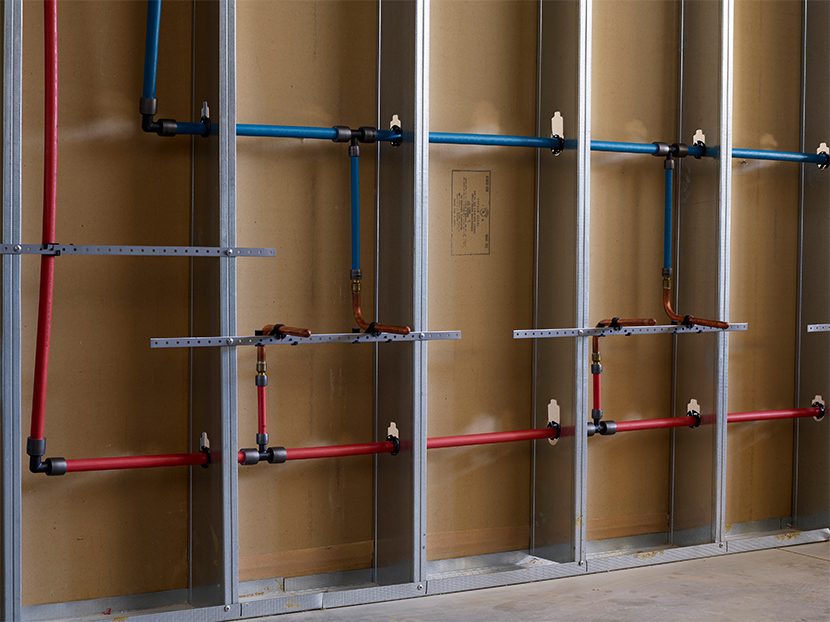
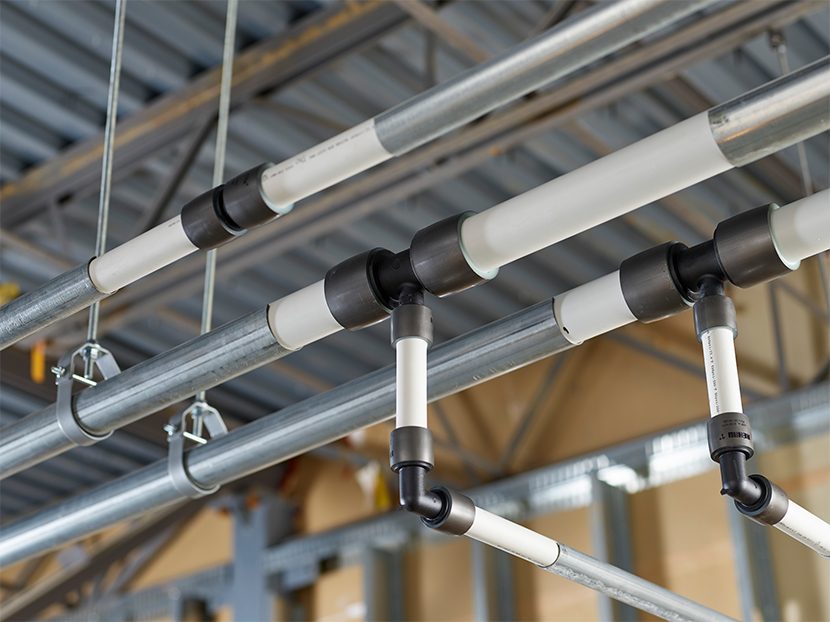

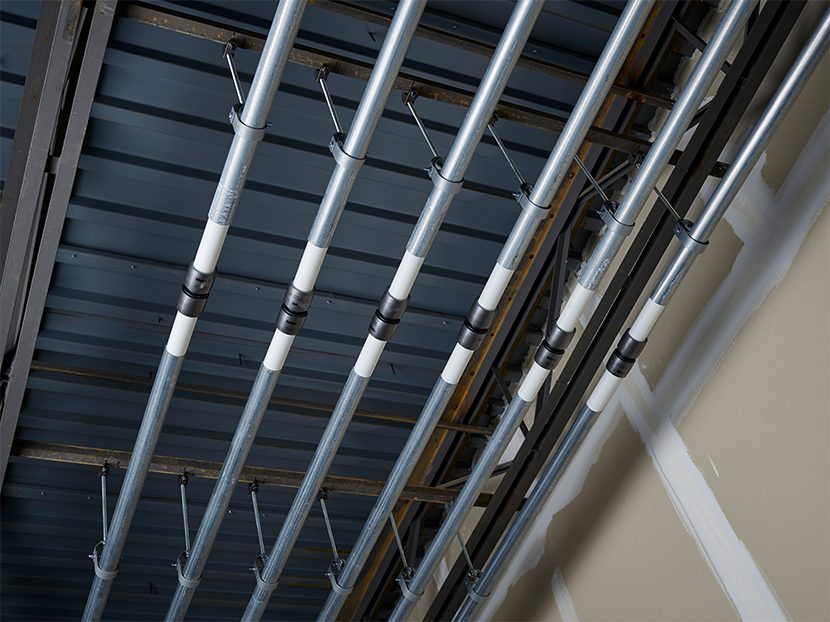
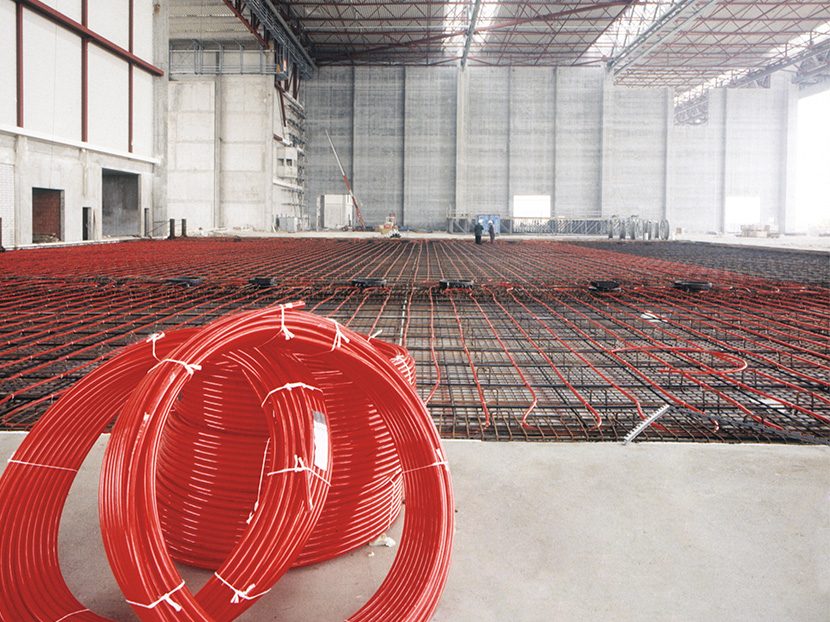
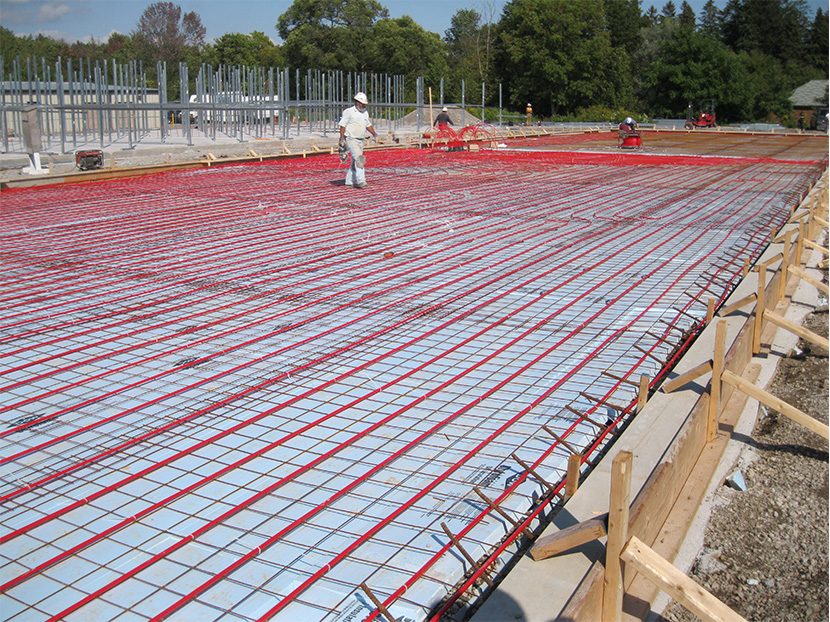


















Despite the fact that crosslinked polyethylene (PEX) tubing is widely used across the plumbing and heating trades in residential applications, many engineers are still evaluating its use in commercial buildings. Historically, they’ve specified copper and CPVC piping systems. With their reputations, and that of their firms, on the line, engineers don’t make material substitutions lightly.
Myths about PEX abound in the plumbing and heating industry, but the truth is PEX is a durable material that can easily withstand the pressures of a commercial building. With larger sizes now on the market, PEX is gaining ground as a high-performance, cost-effective alternative to copper and CPVC piping on large-scale commercial plumbing, hydronic heating and distribution piping projects.
Codes and standards
PEX is safe and approved by almost all jurisdictions throughout the U.S. and Canada. It is manufactured and tested according to the stringent national consensus standards ASTM F876 and CSA B137.5. Regular quality-control checks are performed by manufacturers and independent third-party testing agencies to ensure each product meets ASTM, NSF International and CSA standards.
Additionally, PEX tubing is included in all the major model codes: The International Plumbing Code, the International Mechanical Code, the Uniform Plumbing Code, the Uniform Mechanical Code, the Uniform Solar, Hydronics and Geothermal Code (previously known as the Uniform Solar Energy and Hydronics Code), the National Standard Plumbing Code, the National Plumbing Code of Canada, and the National Building Code of Canada.
“PEX’s flexibility and strength at temperatures ranging from below freezing up to 200 F makes it an ideal piping material for hot- and cold-water plumbing systems, service lines, hydronic radiant heating and cooling systems, snow-melting applications, turf conditioning, residential fire-sprinkler systems, ice-rink systems and permafrost protection beneath refrigerated warehouses,” explains the Plastic Pipe and Fittings Association (PPFA).
Temperature, pressure and sizing
The mechanical properties of PEX allow the tubing to withstand the high and low temperatures found in typical plumbing and heating applications. It also can be instantly pressure-tested, unlike CPVC where installers must wait for the solvent cement used to bond the pipe to the fitting to dry. The model plumbing codes require all pipe and tubing materials to have a listing of 100 psi at 180 F (690 kPa at 82 C). Some PEX manufacturers meet even higher temperature ratings with listings up to 80 psi at 200 F (550 kPa at 93 C). However, it is always prudent to check with the manufacturer for applicable temperature pressure ratings.
Some engineers believe PEX must be upsized, when compared to copper and CPVC, in order to use it in a commercial application. The outside diameter of PEX is the same as copper, while the inside diameter of PEX is slightly smaller. This means that with the same volume of liquid, flow velocity will increase. However, since PEX tubing is not susceptible to the erosion and corrosion issues of copper tube, PEX systems can be designed at higher velocities. Therefore, PEX typically meets performance requirements when exchanged size-for-size with copper.
Time and cost savings
On commercial projects, time is money – either money lost, or money saved. If an engineer specifies a product such as PEX that will save installation time on the jobsite, it’s a win-win-win situation for them, the installing contractor and the building owner/investor.
Installation of flexible systems such as PEX is fast because of the easy handling of the tubing and the reduced requirement for directional fittings. The most common methods for connecting PEX are cold-expansion fitting systems or crimp insert fitting systems. Approved standard specifications for PEX connections are ASTM F877, F1807, F2159, F2080 and F1960. All these standards reference permanent mechanical fittings of various configurations.
In a recent commercial installation time study performed by the Home Innovations Research Lab, two 15-year veterans of commercial plumbing participated in side-by-side timed installations of copper and PEX systems. Home Innovations built a mockup of part of a hotel in two identical sections. Each section included a hallway and four guest suites, each suite having five plumbing fixtures and requiring a range of piping sizes from 1/2 to 2 inches. Each system was installed on a section of the mockup by two different plumbers.
The study found that the PEX plumbing systems installed up to 65 percent faster than copper systems. On the third day of the study, after the installers had worked with all fitting systems, they were asked to comment on aspects they liked and disliked about each of the systems. Copper with solder fittings was the least favorite of the materials used – it’s messy and finished work doesn’t look as professional. PEX won out over copper installations because of fewer fittings needed and less time measuring, cutting and attaching fittings to pipe. The veteran plumbers were also the least concerned with the long-term health effects of PEX compared with other piping systems.
Similar time savings could also be expected in hydronic distribution piping applications that have traditionally used copper piping to move hot or chilled fluid from the heat source to a conditioned space. These applications benefit from the long coil lengths and flexibility of PEX, which lead to simpler design and reduced installation time. With the PEX industry now offering larger sizes up to 3-inches as well as higher temperature ratings of 200 F (93 C), PEX can often be substituted for metal distribution lines.
Overhead distribution runs can be installed using coils or straight lengths of PEX suspended using pipe hangers and supports much like metal pipe. PEX can also be inserted in galvanized steel support channels to reduce the number of support hangers and provide further installation time savings.
While PEX is already the piping material of choice in hydronic radiant applications, many engineers are concerned any time water is being introduced into the structure of a building. Despite the significant energy-saving potential of hydronics – water carries 3,500 times more heat energy than air – many mechanical system designers are far more comfortable transferring energy through air ducts than piping circuits.
The questions often asked are, “Is PEX durable enough for me to bury it in concrete?” and “Does it make sense financially to specify radiant when you still need a forced-air system to handle the latent loads?” The answer to both questions is, “Yes.” Regarding durability, PEX tubing is at least as long-lasting as the concrete and asphalt surfaces it’s buried in, with most PEX manufacturers offering warranties of 25 or more years.
And regarding costs, while air is essential for ventilation, it makes sense to handle most of a commercial building’s heating and cooling load with hydronics, because water transfers energy much more effectively than air. HVAC designs that use a hybrid radiant-forced air system are the most efficient with up to 35 percent reduction in energy costs, which typically results in an ROI of less than 5 years in commercial buildings.
Other benefits of PEX plumbing and mechanical systems include:
- Thermal expansion/contraction. PEX expands more than other plumbing materials such as CPVC and copper. Directional changes made with the tubing and some slack in the tubing during installation accommodate the expansion and contraction of the system.
- Freeze-damage resistant. “PEX piping will typically expand if the system accidentally freezes and return to its original size when the water thaws,” says the Plastics Pipe Institute (PPI). Although PEX is less susceptible to freeze-break due to its flexibility, no pipe or tubing material is completely freeze-break proof. PEX should be installed using the same locally prescribed insulation requirements to prevent freezing as any other piping system.
- Oxygen barrier. PEX tubing for hydronic heating applications is extruded with an oxygen diffusion layer that conforms to the limit for oxygen permeability of <0.32 mg/ (m2*d) in the DIN 4726 standard. This layer keeps ferrous system components from rusting from the inside out.
- Design flexibility. Directional changes can be made with PEX without the use of fittings, resulting in easier design and time-saving installation of plumbing and heating systems. Central or remote manifold systems can take advantage of the flexibility and potential cost savings of PEX tubing.
PEX tubing has been used in mechanical and plumbing applications worldwide for 50 years. If you’re looking for reliability, safety and installation time savings on the next plumbing project or striving toward a hydronic heating solution that maximizes energy savings, take another look at PEX. It’s a versatile and cost-effective material that can be used in all your commercial projects.




